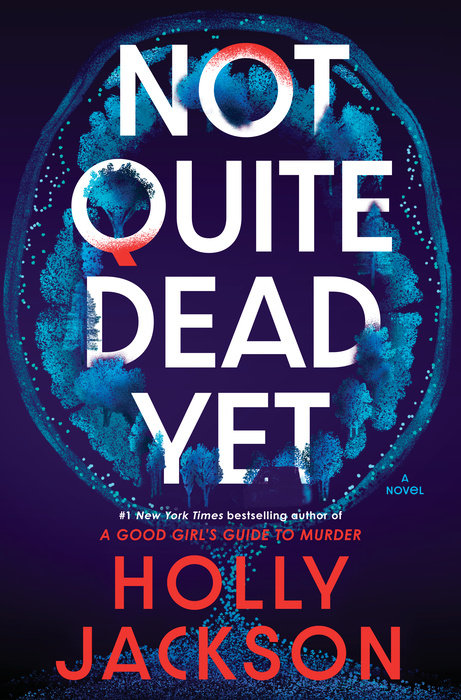Warning: Minor spoilers ahead.
“Not Quite Dead Yet” leaves the reader in suspense until the end, but is not quite perfect yet.
The novel, written by Holly Jackson and published July 22, is a thriller adult novel about a victim named Jet Mason who survives an attack but is warned that she will die in seven days due to the wounds. With the Mason’s well-displayed wealth, many characters have their motives to hurt the Masons, leaving Jet with the complicated goal to identify her murderer. Jet’s intense awareness of her impending death creates an urgency for her and the reader throughout Jet’s investigations of the crime scene and the people connected to her family.
Complicated relationships between the Masons and others in their village are both a compelling and confusing aspect of the novel. Jet’s brother, Luke Mason, has a wife named Sophia who seems intent on becoming close to the Masons for their money. Additionally, Jet has an ex named JJ whose proposal she rejected. Minutes after her attack, JJ texted her, “Sorry.” Throughout the novel, Jet is suspicious of Luke, Sophia, JJ and more. Given the long list of suspects, each with their own believable motive, Jet and the reader remain confused as to who delivered the three blows. This confusion keeps the reader engaged as Jet continues to uncover numerous motives.
For the complex connections and numerous motives to be effective, the author spends the first 11 pages overloading the reader with information. While heavy exposition is expected for murder mystery novels, there are so many characters introduced in the first chapter that the reader may not even remember half of their names until the character becomes important to the plot hundreds of pages later. Since the first chapter is filled with so much information about the characters without an established reason to care about them, readers may feel detached and quit reading the book long before the exposition pays off.
Fortunately, Jackson expertly engages the reader in other sections of the book. The readers learn that Billy Finney, Jet’s childhood best friend, was the one who discovered her dying through a 911 call log. Billy’s extreme desperation and shock encourages the reader to care about what happens to Jet, and how Billy will cope with her inevitable death. Only after Jet’s death does the author allow the reader to see Jet’s goodbye letters to the characters she has been interacting with throughout the novel. Jet’s messy handwriting and vulnerable confessions to her family are likely to draw tears from readers, wishing Jet was not quite dead yet.
Jet’s death is excruciating, physically for her and perhaps emotionally for the reader. She dies without ever knowing who the real killer is. In what could be described as a panic due to the time constraint, she blames Billy. Right after her death is when the reader views Jet’s letters. There is an element of fear that the reader will also be left ignorant of who the killer is, even after all of the effort Jet dedicated to exploring motives. When the perspective switches to Billy after the letters, the suspense builds as he confronts the true murderer on Jet’s behalf. While the last chapter of the novel also suffers from an overload of information, it is less painful as the reader is familiarized with the dynamics between the characters.
The extensive exposition is certainly worth it during certain sections of the book. When Jet discovers that Sophia sabotaged Scott by intentionally weakening his health, the details about Sophia’s baking and Scott’s poor kidneys become relevant. The reader may feel as betrayed as Jet does when she confronts Sophia. Billy’s confrontation at the end also makes the exposition worth the read. A few lines of dialogue in the beginning of the novel are cemented as necessary to understand what motivated the killer to act on that particular night. Since Jackson provides more than enough information for the reader to solve the subplots before or with Jet, the reader has the opportunity to solve mysteries on their own, which can be greatly satisfying if the reader reaches the correct conclusions.
With plenty of convincing motives and suspects, “Not Quite Dead Yet” is an intense investigation of physical and mental hurt.
